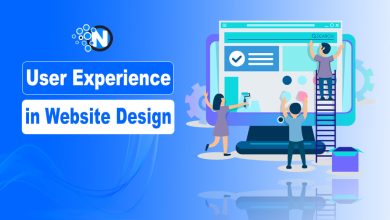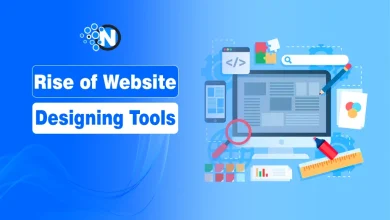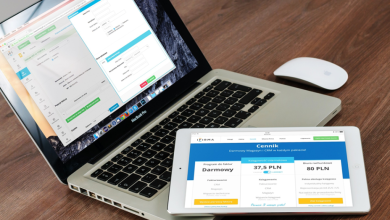The Role of Graphic Design in Modern Business

In this digital world where attention spans are short-lived and brand loyalty is hard-won, graphic design is a silent powerhouse behind successful businesses.
It translates complex ideas into visuals that are easier to understand and more engaging for customers. Visual communication helps brands present their messages clearly and memorably.
In branding, design aligns core values with the customer’s perception. In marketing, it helps highlight key offers and guide attention. Design in user experience ensures users understand how to interact with products and platforms.
A brand strategist described design as the foundation for trust and differentiation. Many businesses rely on professional graphic design services to ensure that their visuals reflect strategic goals and resonate with their target audiences.
In this blog post, I will discuss why graphic design is a strategic tool that shapes perception, drives engagement, and fuels business growth.
How Design Enhances Brand Identity
Design improves brand identity by incorporating brand features such as logos, typography, and color schemes, hence establishing a unique visual brand signature. This identity is what customers identify and associate with the business in various platforms.
Consistency in design builds trust and sends the message that the brand is trustworthy. Brands that use the same design across social media platforms, websites, packaging and advertising gain more recognition.
The personality of the company is also expressed in its visual identity. A technology company can adopt smooth, minimalistic styles to communicate the notion of innovation and a creative agency can use vibrant colors and energetic layouts to communicate originality.
Consistency, trustworthiness, and creativity are some of the qualities that are enhanced when a brand invests in high-quality design.

Branding Through Effective Visual Communication
Logos and Visual Identity
A logo is the most recognisable visual symbol of a brand, creating a lasting impression that communicates its core values. Through its shape, colour, and style, a logo conveys the company’s tone and position. When designed well, it becomes a powerful asset that customers remember and consistently associate with the brand.
Typography affects tone; rounded letters suggest friendliness, while sharp lines suggest precision. Layout ensures balance and clarity. Color choices evoke emotions that influence perception. Together, these elements build a system that reflects the brand’s promise.
When used consistently across channels, a logo and visual identity become part of a brand’s recognition strategy.
Building Consistency and Recognition
Designers build consistent branding, which helps customers remember and trust a company. When brand elements remain the same across website pages, social media profiles, and printed materials, customers perceive the brand as reliable and professional.
Consistent design improves brand recognition by forming a unified visual language. This makes it easier for people to identify the brand in various contexts without confusion.
A polished and stable appearance also shows that the company pays attention to details. That contributes to a perception of professionalism and reinforces the brand’s personality, whether it’s formal, playful, modern, or traditional.
Graphic Design as a Marketing Tool
Design in Marketing Materials
Graphic design helps marketing by making key messages clear, appealing, and easier to remember. Design turns marketing materials into visual tools that reflect the brand’s quality and professionalism.
Common examples include:
- Brochures that present services in a structured, visually appealing way
- Digital ads that use contrast, color, and hierarchy to capture attention
- Social media creatives that reinforce brand identity and prompt engagement
Each piece of content is a chance to communicate brand values visually. When design and messaging work together, campaigns become more effective at guiding customer actions.
Well-designed marketing materials increase credibility, boost campaign results, and reflect a company’s attention to quality.
Increasing Customer Engagement and Conversions
Design influences customer decisions by attracting and engaging people through compelling visual cues like color, layout, and imagery to create emotional appeal and guide user behavior. A strong call-to-action placed inside a clean, visually structured layout can lead to more clicks or purchases.
Design also enhances engagement by making content more enjoyable to consume. A clutter-free layout encourages users to stay longer, interact more, and return later.
Appealing visuals give users a reason to trust the brand. A well-crafted digital experience reduces friction and improves how people feel about the product or service.
Design that is compelling, appealing, and impactful encourages interaction and increases conversion opportunities.
Trust, Perception, and User Experience
How Design Builds Credibility
Trust and credibility can be supported through good design because marketing materials should be presented in a professional way. The clear, well-organised, and visually consistent materials that a brand uses are more likely to be perceived as trustworthy by customers. Poor design, however, causes confusion and loss of trust.
The quality of a company is usually determined by its site, packaging, or even marketing materials. When the design is smooth and self-assured, this enhances the perception of the brand.
Major characteristics that determine trust are clarity, visual harmony, and a professional look. These are attained by powerful layout, proper typography, and economical use of space and color.
Good design means that the first impressions are in line with the values of the brand and its business objectives.
Impact on User Experience
Design enhances communication with the target audience.
User experience is shaped by how easily people can navigate and understand what they see. Design choices like white space, font size, button style, and content structure directly affect how users interact with a website or product.
Color guides emotion and behavior. Typography affects readability and tone. Layout organises content into a hierarchy that leads users through information without effort.
Good design doesn’t just look nice; it removes friction, makes interaction intuitive, and keeps users engaged longer. These improvements translate to better satisfaction and a stronger brand connection.
Is Graphic Design Worth the Investment?
Business Benefits of Quality Design
High-quality graphic design delivers measurable business value. It improves conversion rates, supports customer loyalty, and increases brand trust.
When a brand consistently presents itself with a strong visual identity, people are more likely to return and refer others. A visually coherent brand looks more trustworthy, which supports long-term customer relationships.
Design also helps clarify complex ideas, which can be especially important in industries like tech, healthcare, and finance. Clear communication reduces misunderstanding and increases confidence.
Many companies turn to specialised graphic design services to elevate their branding and streamline communication across all channels, carefully considering the cost of graphic design services as part of their investment.
Design adds both strategic and creative value to the business by improving clarity, shaping brand personality, and elevating customer experience.
Standing Out in the Market
In a crowded market, brands with a distinct and memorable visual identity are easier to recognise and harder to forget. Design helps businesses present themselves in a unique way that reflects their values and vision.
A product with well-designed packaging, a website with a modern interface, or social content with consistent style can all create a competitive edge.
Customers tend to notice brands that feel polished and coherent. Marketing professionals often highlight visual identity as a key driver of engagement and customer retention.
Design gives brands the opportunity to showcase who they are and why they’re unique.
Stakeholder Perspectives on Design
Graphic design is very important in the perception and interaction of various stakeholders with a brand.
Business owners perceive design as a tool that facilitates visibility, revenue, and positioning. A modern and credible brand is easier to sell and market.
Graphic designers are concerned with alignment and usability. They are there to make sure the brand is communicated effectively and is visually the same on all platforms.
Customers appreciate a design that is simple to interpret and pleasing. Positive experience generates loyalty and enhances satisfaction. Ease of use, when supported by design, results in more returns.
Final Thoughts
Design is a quality that investors usually use as an indicator of how a company is ready, attentive, and how well its brand is already developed. Visual coherence is the thinking strategy behind a product or service.
Design integrates branding, usability, trust, and business performance in a manner that benefits all components of the organization.
Whether you’re a startup trying to make a splash or an enterprise refining your global image, investing in thoughtful, strategic design is investing in your future.




